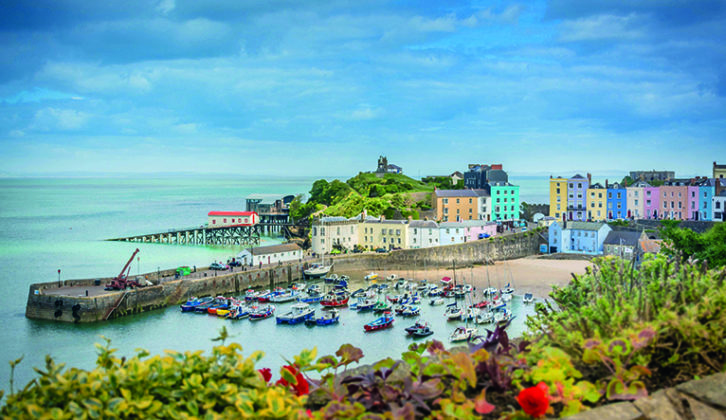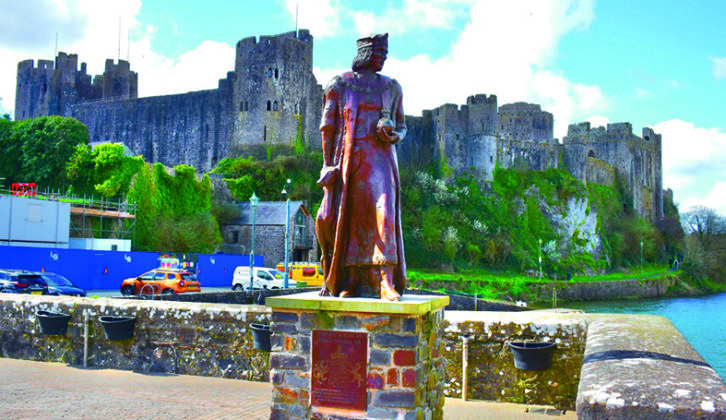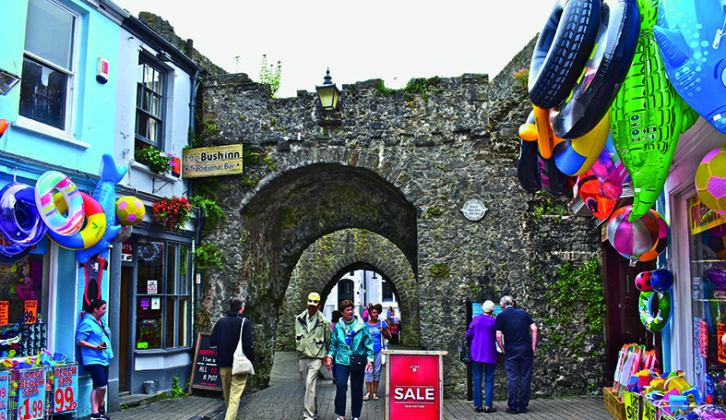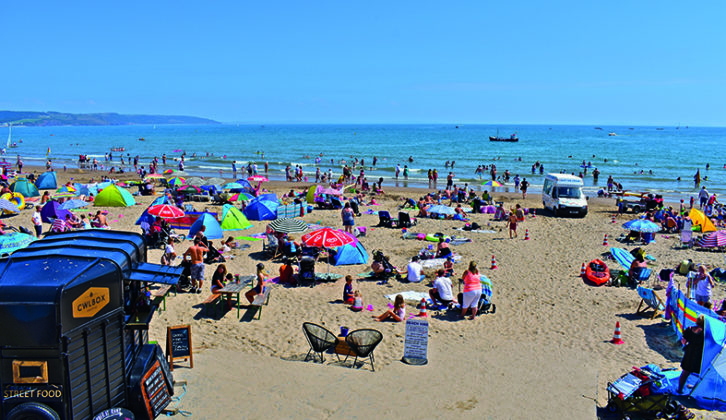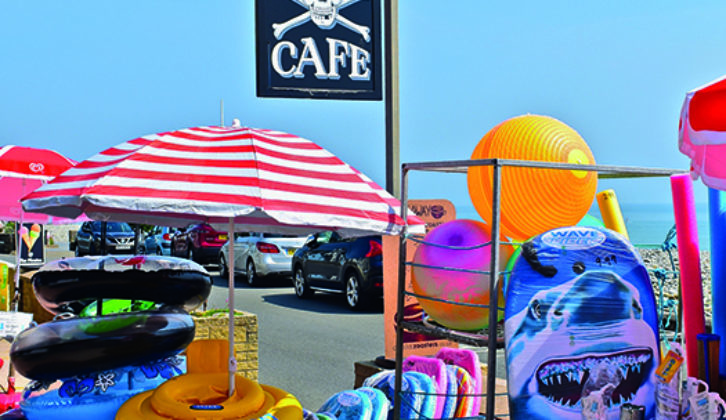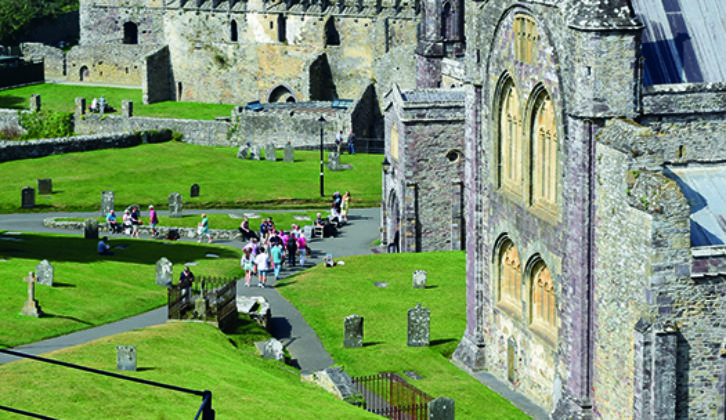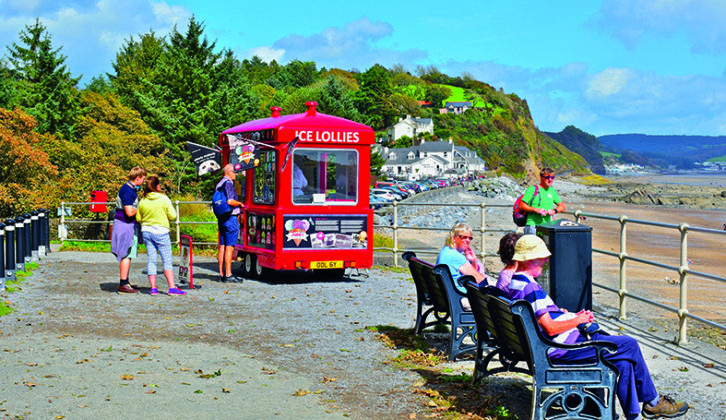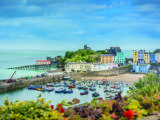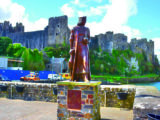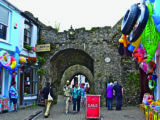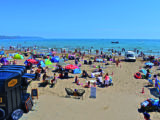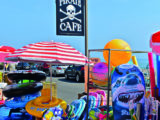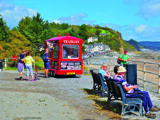One of the veery few good things to come out of the pandemic is the fact that we have all been forced to rethink where to go on our holidays. Living in South Wales, we began to consider fairly local destinations; less than a couple of hours away, say.
It was fast approaching the end of the summer and we always love being by the sea, so for us, a visit to Pembrokeshire fitted the bill.
The next decision was where we might stay, so following our daughters’ advice from when she used to tour in a VW campervan, we settled on a small family-run campsite, Little Kings Holiday Park, in Ludchurch. And what a find that turned out to be!
The travel could not have been easier – having loaded up, we set off in the late morning and after heading west along the M4, we were pulling into Little Kings just 90 minutes later.
After a leisurely lunch, we spent the rest of the afternoon chilling out in the sunshine. Early that evening, we headed to the onsite Little Kings Tavern for a meal and a cold beer, before returning to our home-from-home for the next few days ready for an early night.
Historic castle
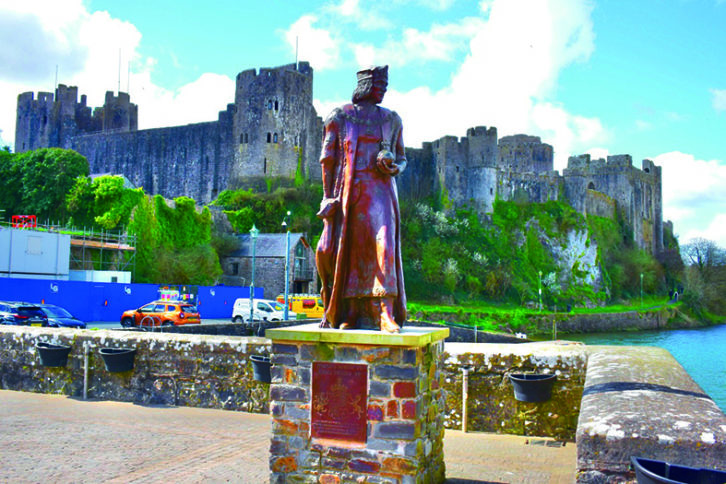
The first day of our week-long break found us heading for the historic town of Pembroke (not to be confused with nearby Pembroke Dock).
The town’s ‘The Commons’ Pay & Display car park is a good option for those with a motorhome. In the heart of Pembroke you’ll find a range of independent shops and a good selection of cafés when you need to refuel.
This is a fine old town with plenty to see, dominated by the ancient castle, which dates back to the 12th and 13th centuries.
This spectacular monument is open to the public (adults £7, over-65s and children aged the to 15, £6), but you can still stroll around the outside of the castle for free, so we set off beside the lake formed by the Pembroke River, which surrounds the fortification on three sides.
Returning towards the town, you can continue walking alongside the Mill Pond. Here you could hire a rowing boat from near the bridge and spend a delightful hour or so boating around the great castle and the surrounding areas.
We, however, continued our stroll back towards town and then could not resist the very tempting wares on display in The Cake Shop, not far from the castle. We popped in and enjoyed a pot of tea for two and a couple of delicious cakes.
Suitably fortified, we retuned to the car park and headed towards our campsite, but then decided to call in at Tenby on the way.
Sandy beaches
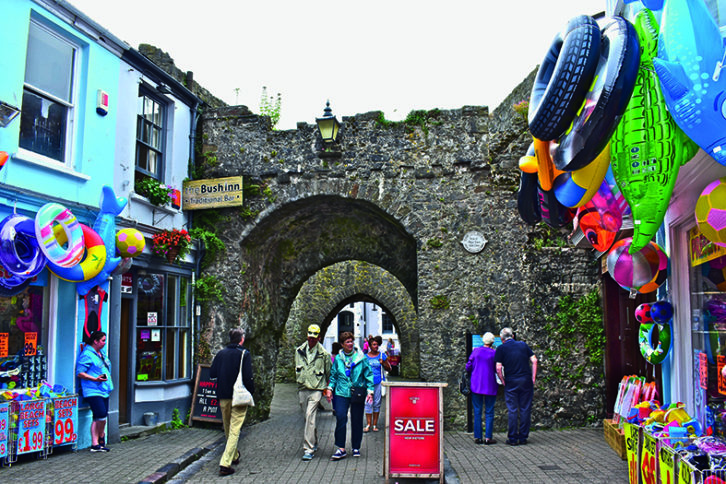
The Pembrokeshire Coast National Park is truly stunning, and within it you’ll find Tenby, a fine traditional seaside town, complete with its own 13th-century stone walls.
It boasts no fewer than three sweeping sandy beaches, too – North and South beach, separated by Castle Beach in the middle.
North Beach, which is below the main town and which has a car park with extended bays for motorhomes, extends into the picture-postcard harbour area.
Beyond the harbour, a piece of land juts out and there you will find the remains of Tenby Castle, and the Tenby Museum.
The RNLI has a lifeboat station here and you might also spot the old boat-house, with its long slipway, which terminates on the sand at low tide – hence the need to build a newer station with access to the water.
Castle Beach sits beneath the cliffs and is the departure point for ferries carrying passengers on the short journey across to Caldey Island.
This pretty island is an understandably popular tourist destination during the summer. The island is dominated by the splendid monastery and the abbey church, these days home to the monks of the Reformed Cistercian order.
There’s plenty to see and it is easy to spend a whole day on the island, which also offers sandy beaches and fine walks. Another notable attraction at Castle Beach is the tidal St Catherine’s Island. St Catherine’s Fort located on this rock, was built between 1867 and 1870 as a result of the Napoleonic Wars.
In 1907 the island was sold (for £500) to the Windsor-Richards family, who had made their fortune from coal and steel.
A fabulous luxury home was the result, which was occupied until the house was sold in 1940, when all the lavish fixtures and fittings were auctioned by Harrods.
In 1968, a local businessman set up a zoo on the island, which operated for 10 years; since then, however, the fort has been empty.
You can visit this fascinating place, but make sure you check the tide tables before you go, because the island is only accessible at low tide.
It was by now getting quite late in the day, so we headed back to our campsite and as a treat, collated an appetising takeaway from Severn Spice, in Kilgetty, on the way.
Just 15 minutes later, we were relaxing over a delicious meal, and more importantly, no cooking and minimal washing up.
Further afield
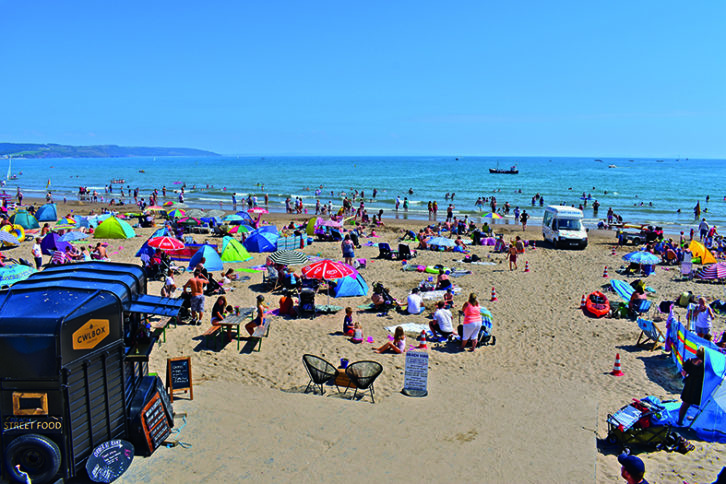
As an alternative to Tenby its near neighbour Saundersfoot provides a quieter location, but retains the attractions of a lovely sandy beach, an interesting fishing harbour and plenty of shops, pubs and cafés.
This pleasant seaside resort can become a bit crowded in the peak season, but there is ample space for everyone. Parking is available in the car park by the Regency Hall (there are two dedicated motorhome bays).
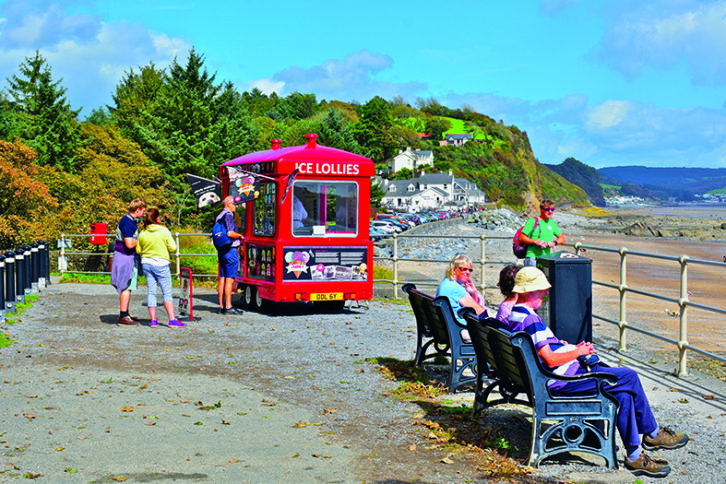
Further east along the coast is the hamlet of Wiseman’s Bridge. It can be reached via narrow country roads, but as single-decker buses can go there, with a bit of care (and a motorhome on the small side), you should be able to, too.
Alternatively, the local section of the Wales Coast Path leads from Saundersfoot to Wiseman’s Bridge and is a half-hour stroll along the shore, including a 100m-long tunnel (with lighting) through the cliffs.
Once there, the beach is a mix of sand and pebbles, and when you need to stop for a snack, the Wiseman’s Bridge Inn has both indoor and outdoor seating and offers an excellent selection of traditional pub food.
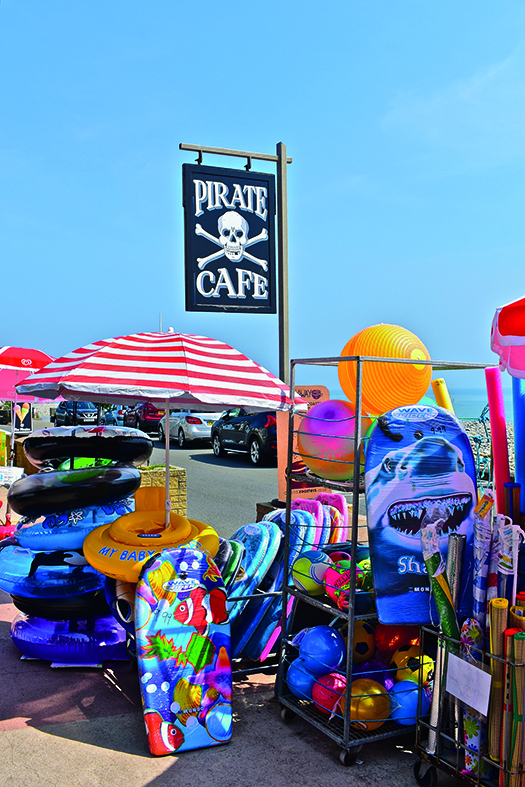
Further east still (along narrower roads), is the pretty village of Amroth. This is mostly a pebble beach, although some sand is exposed as the tide retreats. The village has a few traditional seaside shops selling souvenirs and beach goods, as well as the Pirate Café, a small but very popular place that serves a good choice of hot snacks.
Especially favoured (and highly recommended by us!) is the range of tasty breakfast baps which you can enjoy while admiring the fine sea views.
Adventures inland
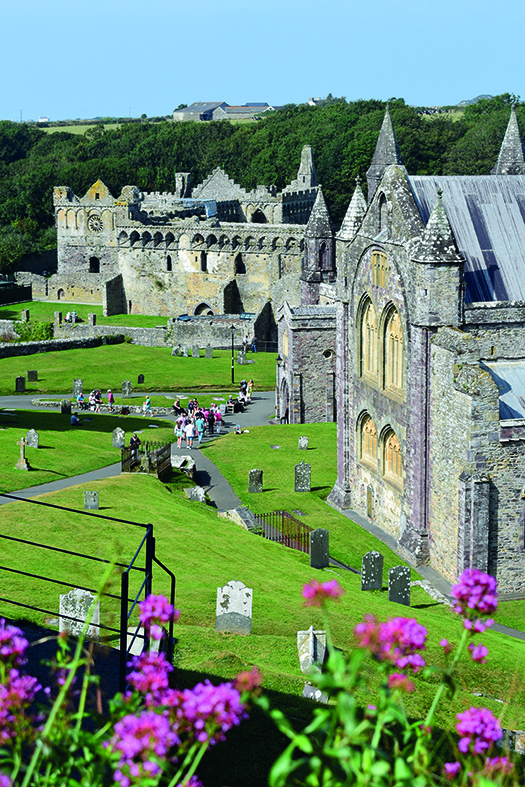
As a change from days at the beach, there is a wealth of other things to see and do, especially for families with children.
Folly Farm is one such place – it started out as a small farm with animals for youngsters to see and pet, but has expanded over the years into a fully fledged adventure park and zoo. In addition, a full-facility touring site (with the same name) has been established, virtually next door to the park. It is on the A478 north of Begelly.
If you are looking for an even more adventurous day out, you could head to Oakwood Theme Park, where you will find a huge range of rides suitable for all the family, from big roller coasters for the thrill-seekers to small rides for the little ones. There is also a miniature railway providing easy access from the car park.
For our next outing, we fancied a longer day’s drive, so we headed west along the A40 as far as Haverfordwest, then drove on further still along the A487, passing the stunning beach at Newgale and the pretty little harbour at Solva, eventually arriving at the UK’s smallest city, St David’s.
Although it only has a population of less than 2000, this lovely place attracts thousands of people every year, mainly to visit the Norman cathedral housing the remains of St David – the patron saint of Wales (for parking, try the Oriel y Parc car park).
We wandered around the streets and found our way down to the cathedral, then enjoyed a coffee sitting out in the sunshine.
On the return journey we stopped for lunch at the seaside village of Broad Haven, before calling in at Haverfordwest to top up our dwindling food supplies. Then we went back to the campsite to relax before our next venture out.
Shopping and dining
For our final trip, we headed towards the town of Narberth. After a 20-minute drive we found a spot in the Towns Moor car park at the top of the High Street, then ambled down the road, browsing the many small independent shops that are a feature of this neat and well-do-do place.
There are shops here to suit all budgets, and Elaine particularly loves popping into the clothes shops, where she can find those ‘essential’ items she always forgets to pack!
Shopping does work up an appetite, though, so we stopped at Liz’s Bakery & Coffee Shop, where they serve excellent breakfasts, lunches and teas.
After a leisurely return to the campsite, we relaxed in the sunshine and then strolled to the Little Kings Tavern to enjoy a final poolside drink and a meal. Our week was over all too soon, but we had only explored a few of the attractions of this lovely part of the world, so we’ll be back!
TOUR ESSENTIALS
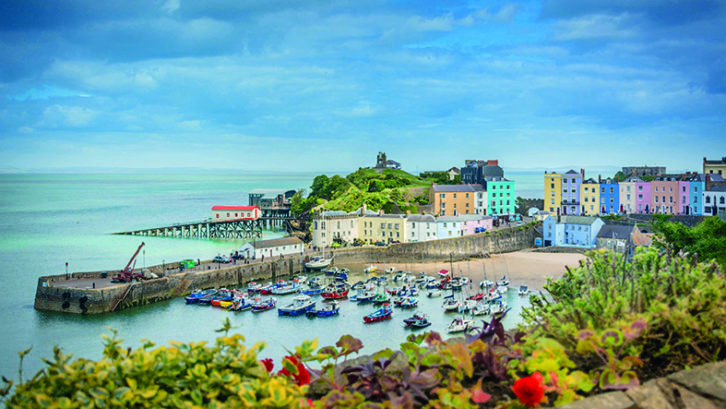
Way to go
From the north or Midlands, go down the M5 to the M4 and head into Wales over the Severn Bridge. From the east, the easiest way is along the M4 until it ends at Pont Abraham Services.
The good-quality road continues as the A48 and is dual-carriageway all the way through to Carmarthen. We then took the A40 to St Clears roundabout, where we forked left onto the A477, signposted Pembroke Dock.
From then on, it was single-carriageway roads but a little further, there’s is a new stretch of road that cuts through some lovely countryside and avoids the long, arduous crawl through the villages of Llanddowror and Red Roses.
Just before reaching the Kilgetty roundabout, we took a left turn towards Amroth and a couple of miles later we were driving into Little Kings Holiday Park. If you are using sat nav, head for the nearby village of Ludchurch.
Where we stayed
Little Kings Holiday Park
- Amroth Road, Ludchurch, SA67 8PG
- Web www.littlekings.co.uk
- Open 1 March-31 October
- Pitches 66, a mixture of grass and hardstanding, including 20 fully serviced
- Charges (pitch+2+hook-up) £30-£50 depending on season and pitch type
If you liked this… READ THESE:
South Wales: Practical Motorhome Travel Guide
Pembrokeshire: A Local’s Knowledge
Best A-Class motorhome for 2022
If you’ve enjoyed reading this article, why not get the latest news, reviews and features delivered direct to your door or inbox every month. Take advantage of our brilliant Practical Motorhome magazine SUBSCRIBERS’ OFFER and SIGN UP TO OUR NEWSLETTER for regular weekly updates on all things motorhome related.
The Pembrokeshire Coast National Park is truly stunning, and within it you'll find Tenby, a fine traditional seaside town, complete with its own 13th-century stone walls
